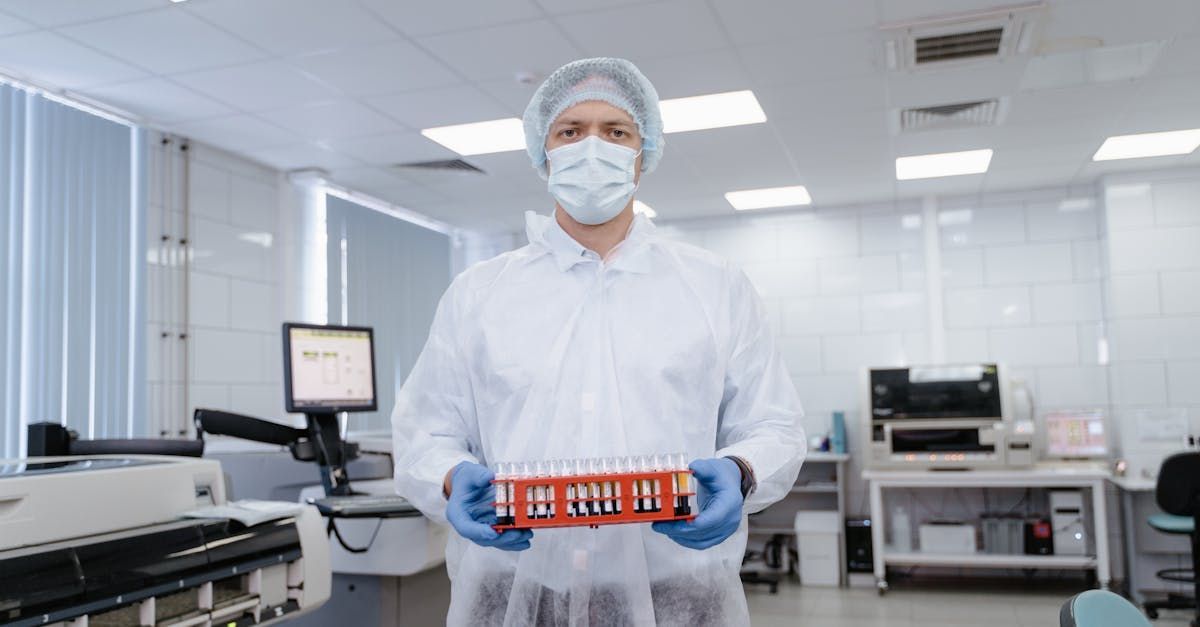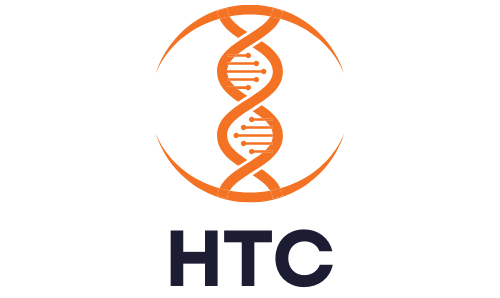Telemedicine: Growth Potential and Investment Insights
Telemedicine, the practice of delivering healthcare services remotely through digital communication technologies, has rapidly evolved from a niche service to a mainstream component of modern healthcare. This transformation is driven by advancements in technology, changes in patient expectations, and the need for more accessible and cost-effective healthcare solutions. Telemedicine encompasses a wide range of services, including virtual consultations, remote monitoring, and telehealth education, making healthcare more accessible to people regardless of their location.
In the current healthcare landscape, telemedicine plays a crucial role. The COVID-19 pandemic acted as a significant catalyst, accelerating the adoption of telemedicine as social distancing measures and overwhelmed healthcare facilities necessitated remote healthcare solutions. Telemedicine has proven its value by providing continuous care during the pandemic, reducing the risk of virus transmission, and maintaining the connection between patients and healthcare providers.
Beyond the pandemic, telemedicine addresses longstanding issues in healthcare, such as the shortage of medical professionals in rural areas, the need for timely medical consultations, and the rising costs of healthcare services.
The purpose of this blog is to delve into the growth potential of telemedicine and explore the investment opportunities it presents. By examining the factors driving the rapid expansion of telemedicine, the benefits it offers, and the challenges it faces, this blog aims to provide a comprehensive overview for investors looking to capitalize on this burgeoning sector. Additionally, we will highlight key players in the market, future trends, and strategies for evaluating telemedicine investments to help investors make informed decisions in this dynamic and rapidly evolving field.
The Evolution of Telemedicine
Telemedicine is not a new concept; its roots can be traced back to the early 20th century. Initially, it was limited to the use of telephones for medical consultations. One of the earliest recorded instances of telemedicine was in the 1920s when radios were used to provide medical advice to ships at sea. This rudimentary form of telemedicine laid the groundwork for future innovations.
In the 1960s, NASA played a pivotal role in advancing telemedicine. The space agency needed a way to monitor astronauts' health during space missions, leading to the development of remote monitoring technologies. These innovations, initially designed for space exploration, found applications in terrestrial healthcare, particularly in providing care to remote and underserved areas.
Key Technological Advancements
The evolution of telemedicine has been closely tied to advancements in communication and information technology. The advent of the internet in the 1990s marked a significant turning point, enabling more sophisticated and widespread telemedicine applications. The following key technological advancements have fueled the growth of telemedicine:
- Broadband Internet and Mobile Networks: The widespread availability of high-speed internet and mobile networks has made telemedicine accessible to a larger population. Patients and healthcare providers can now connect seamlessly from virtually anywhere.
- Smartphones and Mobile Apps: The proliferation of smartphones and health-related mobile apps has empowered patients to manage their health more proactively. These apps facilitate video consultations, remote monitoring, and access to medical records.
- Wearable Devices: Wearable health devices, such as smartwatches and fitness trackers, collect real-time health data, which can be transmitted to healthcare providers for monitoring and analysis. This continuous data stream enhances the ability to manage chronic conditions and detect health issues early.
- Artificial Intelligence (AI) and Machine Learning: AI and machine learning technologies have improved diagnostic accuracy and personalized treatment plans. These technologies analyze vast amounts of data to provide insights that enhance patient care.
- Electronic Health Records (EHRs): The digitization of health records has facilitated the seamless sharing of patient information among healthcare providers, improving coordination and continuity of care.
The COVID-19 pandemic has been a watershed moment for telemedicine. The necessity of maintaining social distancing and reducing the burden on healthcare facilities drove a dramatic increase in telemedicine adoption. According to a report by McKinsey & Company, telehealth utilization increased 38 times from the pre-COVID-19 baseline, with some providers seeing as much as a 175-fold increase in telemedicine visits.
Several factors contributed to this surge:
- Regulatory Flexibility: Governments and regulatory bodies around the world relaxed restrictions on telemedicine. In the United States, for example, the Centers for Medicare & Medicaid Services (CMS) expanded reimbursement for telehealth services, making it financially viable for providers.
- Patient Acceptance: Patients, who might have been hesitant to use telemedicine, embraced it out of necessity. The positive experiences many had during the pandemic are likely to lead to continued use post-pandemic.
- Healthcare Provider Adoption: Healthcare providers rapidly integrated telemedicine into their practice models, investing in the necessary technology and training to deliver care remotely.
- Technological Readiness: The technology infrastructure required for telemedicine, including high-speed internet, smartphones, and secure video conferencing platforms, was already in place, allowing for quick scaling of telehealth services.
The pandemic has demonstrated the viability and effectiveness of telemedicine, leading to a permanent shift in how healthcare is delivered. As the world adapts to a new normal, telemedicine is poised to continue growing, offering significant opportunities for investment and innovation.
Market Growth and Projections
The telemedicine market has experienced exponential growth in recent years. As of 2023, the global telemedicine market was valued at approximately $87.6 billion and is expected to continue its upward trajectory. This substantial market size is a testament to the increasing acceptance and integration of telemedicine into mainstream healthcare systems.
The telemedicine market is projected to grow at a compound annual growth rate (CAGR) of 22.3% from 2023 to 2030. This rapid growth is driven by several factors, including technological advancements, increased patient demand for convenient healthcare solutions, and supportive regulatory frameworks. By 2030, the market is expected to exceed $360 billion, reflecting the sustained momentum and significant investment opportunities in this sector.
Regional Market Analysis
North America
- North America is the largest market for telemedicine, driven by high healthcare expenditure, advanced technology infrastructure, and favorable government policies. The United States, in particular, has seen widespread adoption of telehealth services, supported by insurance reimbursement and regulatory flexibility.
Europe
- Europe represents a significant and growing market for telemedicine. Countries like the United Kingdom, Germany, and France have invested heavily in digital health initiatives. The European Union's focus on cross-border healthcare and telemedicine interoperability is further boosting the market.
Asia-Pacific
- The Asia-Pacific region is experiencing the fastest growth in telemedicine adoption. Factors such as a large population, increasing smartphone penetration, and government initiatives to improve healthcare access are driving this growth. China and India are leading the charge, with substantial investments in telehealth infrastructure.
Latin America and Middle East & Africa
- These regions are also witnessing growth in telemedicine, albeit at a slower pace compared to North America and Asia-Pacific. In Latin America, countries like Brazil and Mexico are expanding telehealth services to reach remote areas. In the Middle East and Africa, telemedicine is helping to address healthcare disparities and improve access to medical care.
Key Drivers of Growth
Technological Advancements
- Continuous innovations in technology, including the development of AI-powered diagnostic tools, advanced telecommunication networks, and wearable health devices, are enhancing the capabilities and reach of telemedicine.
Regulatory Support
- Governments worldwide are recognizing the potential of telemedicine to improve healthcare delivery. Regulatory bodies are enacting policies that facilitate the integration of telehealth into healthcare systems, such as expanded insurance coverage and reimbursement for telehealth services.
Patient Demand
- The convenience and accessibility of telemedicine have led to increased patient demand. Patients appreciate the ability to receive medical consultations without the need for travel, reducing time and cost burdens. The positive experiences during the COVID-19 pandemic have further solidified patient acceptance of telehealth.
Cost Efficiency
- Telemedicine offers significant cost savings for both patients and healthcare providers. By reducing the need for physical infrastructure and enabling more efficient use of healthcare resources, telemedicine helps lower overall healthcare costs.
Chronic Disease Management
- The growing prevalence of chronic diseases is driving the need for continuous monitoring and management. Telemedicine facilitates regular follow-ups and remote monitoring, improving patient outcomes and reducing hospital readmissions.
Healthcare Access
- Telemedicine is particularly beneficial in improving healthcare access in rural and underserved areas. By bridging the gap between patients and healthcare providers, telemedicine ensures that more people receive timely and appropriate medical care.
The confluence of these drivers is creating a robust environment for the growth of telemedicine. As the market continues to expand, it presents a multitude of investment opportunities, from established telehealth companies to innovative startups developing cutting-edge technologies. The next section will explore these investment opportunities in greater detail, highlighting key players and trends shaping the telemedicine landscape.
Benefits of Telemedicine
One of the most significant benefits of telemedicine is its ability to increase access to healthcare services. Telemedicine breaks down geographical barriers, allowing patients in remote or rural areas to consult with specialists and receive high-quality care that would otherwise be unavailable to them. This is particularly important in regions with a shortage of healthcare providers. By leveraging telemedicine, patients can receive timely medical attention without the need for long-distance travel, reducing delays in diagnosis and treatment.
Telemedicine offers substantial cost savings for both patients and healthcare providers. For patients, telemedicine reduces travel expenses, time off work, and childcare costs associated with in-person visits. A virtual consultation can be more affordable than an in-office visit, especially for routine follow-ups and minor health issues.
Healthcare providers also benefit from cost savings. Telemedicine reduces the need for physical infrastructure, such as office space and medical equipment. It also allows providers to optimize their schedules, increasing the number of patients they can see in a day. This efficiency can lead to higher revenue and lower overhead costs. Moreover, telemedicine can decrease the number of no-show appointments, as patients find it easier to attend virtual consultations.
Telemedicine has been shown to improve patient outcomes and satisfaction. Remote monitoring and virtual consultations enable more frequent interactions between patients and healthcare providers, which is crucial for managing chronic conditions. Patients with diabetes, hypertension, and other long-term illnesses can benefit from regular check-ins and continuous monitoring, leading to better disease management and fewer complications.
Patient satisfaction with telemedicine is generally high. Many patients appreciate the convenience and flexibility of virtual visits, which can be scheduled around their daily routines. The ability to receive care from the comfort of their own home also enhances the patient experience. Studies have shown that patients who use telemedicine report higher satisfaction levels due to shorter wait times, personalized attention, and the ease of accessing healthcare services.
Telemedicine has the potential to reduce healthcare disparities by making medical services more accessible to underserved populations. In many communities, particularly in low-income and rural areas, access to healthcare is limited by factors such as transportation, availability of providers, and financial constraints. Telemedicine addresses these challenges by providing an affordable and convenient alternative to traditional healthcare delivery.
For marginalized groups, telemedicine can be a lifeline. It ensures that individuals who might otherwise be neglected by the healthcare system receive necessary medical attention. This is particularly important for populations with historically limited access to care, including ethnic minorities, the elderly, and individuals with disabilities. By bridging the gap between patients and providers, telemedicine helps create a more equitable healthcare system.
The multifaceted benefits of telemedicine demonstrate its transformative potential in modern healthcare. As telemedicine continues to evolve, it not only enhances access, reduces costs, and improves patient outcomes, but also plays a crucial role in addressing systemic healthcare disparities. In the following sections, we will delve into the key players in the telemedicine market, investment opportunities, and the future trends that are shaping this dynamic field.
Key Players in the Telemedicine Market
Major Telemedicine Companies
1. Teladoc Health Teladoc Health is a global leader in the telemedicine space, offering a broad range of virtual care services, including general medical consultations, mental health services, and chronic condition management. Teladoc's platform connects patients with board-certified doctors 24/7, making healthcare accessible and convenient. With a presence in over 130 countries, Teladoc continues to expand its services and integrate new technologies to enhance patient care.
2. Amwell Amwell (American Well) is another prominent player in the telemedicine industry, providing telehealth solutions to health systems, health plans, employers, and physicians. Amwell's platform supports urgent care, behavioral health, chronic disease management, and telehealth for schools and senior care. The company's robust network and strategic partnerships have positioned it as a key player in the growing telemedicine market.
3. MDLive MDLive offers virtual healthcare services through a network of board-certified physicians and licensed therapists. The platform provides on-demand consultations for urgent care, dermatology, behavioral health, and wellness services. MDLive's user-friendly app and extensive provider network have made it a popular choice for patients seeking convenient and reliable telehealth services.
Innovative Startups and Emerging Players
1. Doctor on Demand Doctor on Demand is a telemedicine startup that connects patients with healthcare providers through video visits. The platform offers services for urgent care, behavioral health, and preventive health, including wellness and chronic condition management. Doctor on Demand's focus on delivering high-quality care through a seamless digital experience has attracted significant investment and a growing user base.
2. Lemonaid Health Lemonaid Health is an online healthcare platform that provides affordable and convenient medical consultations and prescription services. The company focuses on specific conditions such as mental health, sexual health, and primary care. By leveraging technology and streamlining the consultation process, Lemonaid Health aims to make healthcare more accessible and cost-effective.
3. K Health K Health is an AI-powered telemedicine platform that uses machine learning to provide personalized health information and connect patients with doctors. The platform analyzes symptoms and medical history to offer insights and recommendations, allowing patients to make informed decisions about their health. K Health's innovative approach to telemedicine has garnered attention for its potential to revolutionize the healthcare industry.
4. Notable Labs uses predictive precision medicine to tailor treatments to individual patients, particularly in oncology. While they are not directly involved in telemedicine, their focus on personalized healthcare and leveraging data for better treatment outcomes aligns with the broader trends in digital health and telemedicine.
Case Studies of Successful Telemedicine Implementations
1. Mayo Clinic's Tele-Stroke Program The Mayo Clinic's Tele-Stroke Program is a prime example of how telemedicine can improve patient outcomes in critical care situations. The program connects rural hospitals with Mayo Clinic stroke specialists through a secure video link. This allows specialists to assess patients remotely, recommend treatments, and guide local providers in administering clot-busting drugs. The Tele-Stroke Program has significantly reduced treatment times and improved recovery rates for stroke patients in rural areas.
2. Ochsner Health's O Bar Ochsner Health's O Bar is an innovative telemedicine initiative that combines digital health tools with in-person support. Patients can visit O Bar locations to learn about and purchase health apps, wearables, and other digital health devices. O Bar staff provide personalized recommendations and training to help patients integrate these tools into their healthcare routines. This hybrid approach has enhanced patient engagement and improved chronic disease management.
3. Cleveland Clinic's Express Care Online Cleveland Clinic's Express Care Online platform offers virtual visits for a wide range of medical conditions, from minor illnesses to chronic disease management. The platform has been particularly effective in providing continuity of care during the COVID-19 pandemic, allowing patients to receive medical attention without the risk of exposure. Express Care Online's success demonstrates the value of telemedicine in maintaining high-quality care during public health crises.
Investment Opportunities in Telemedicine
1. Venture capital (VC) and private equity (PE) firms have been instrumental in fueling the growth of telemedicine by providing the necessary capital for startups and emerging companies. Some notable investment activities include:
2. Sequoia Capital and Doctor on Demand Sequoia Capital has been a major investor in Doctor on Demand, recognizing the potential of the company’s on-demand telehealth services. The funding has enabled Doctor on Demand to expand its services and enhance its technology platform.
3. Andreessen Horowitz and Omada Health Andreessen Horowitz has invested in Omada Health, a digital health company that offers telemedicine services for chronic disease management. The investment has supported Omada Health’s growth and the development of its evidence-based care programs.
4. General Catalyst and Ro General Catalyst has invested in Ro, a telehealth startup focusing on men's health, women's health, and mental health services. Ro’s direct-to-consumer approach and emphasis on personalized care have attracted significant funding.
5. Notable Labs Notable Labs, while not a traditional telemedicine company, leverages data and AI to personalize cancer treatments, intersecting the fields of telemedicine and precision medicine. Notable Labs' innovative approach has attracted venture capital interest, reflecting the broader investment trends in healthtech and telemedicine.
Investment Trends and Notable Funding Rounds
- The telemedicine sector has seen several notable funding rounds, reflecting the growing investor confidence in this market. Key trends and significant investments include:
- Consolidation and Strategic Acquisitions Larger telemedicine companies are acquiring smaller startups to expand their service offerings and technological capabilities. For example, Teladoc’s acquisition of Livongo Health for $18.5 billion was one of the largest deals in digital health history, highlighting the trend towards consolidation.
- Focus on Specialized Telemedicine Services Investors are increasingly interested in telemedicine platforms that offer specialized services, such as mental health, chronic disease management, and remote monitoring. Companies like Lyra Health, which focuses on mental health services, have raised substantial funds to expand their offerings.
- International Expansion Telemedicine companies are expanding their reach beyond their home markets, seeking growth opportunities in emerging markets. Investments are being directed towards companies with the potential to scale internationally, such as Practo, an Indian health tech company that has raised over $230 million to expand its telehealth services across Asia.
- Integration of AI and Machine Learning The integration of AI and machine learning in telemedicine is attracting significant investment. Companies developing AI-driven diagnostic tools and personalized care solutions, such as K Health, have secured substantial funding to enhance their platforms.
Recent Funding Rounds
- MDLive: Raised $50 million in a funding round led by Health Velocity Capital to expand its telehealth services.
- Cerebral: Secured $300 million in a Series C funding round, led by SoftBank Vision Fund 2, to scale its mental health telemedicine platform.
- Hinge Health: Raised $600 million in a Series E funding round, led by Coatue and Tiger Global, to develop its digital musculoskeletal clinic.
These investment opportunities and trends indicate a vibrant and rapidly evolving telemedicine market. For investors, understanding the landscape and identifying companies with strong growth potential and innovative solutions is crucial for making informed investment decisions. In the next section, we will discuss the risks and challenges associated with telemedicine investments and strategies for mitigating these risks.
Risks and Challenges
Telemedicine operates at the intersection of healthcare and technology, making it subject to a complex regulatory landscape. Each country, and often each state or region within a country, has its own set of regulations governing telemedicine. These can include licensing requirements for healthcare providers, rules about prescribing medications remotely, and standards for patient data protection. Navigating these regulations can be challenging for telemedicine companies, potentially leading to legal issues or delays in market entry.
For instance, in the United States, telemedicine providers must comply with both federal and state regulations, which can vary significantly. While the COVID-19 pandemic prompted temporary regulatory relaxations to facilitate telehealth adoption, the future regulatory environment remains uncertain. Companies must stay agile and proactive in monitoring and responding to regulatory changes to ensure compliance and avoid potential fines or operational disruptions.
The nature of telemedicine necessitates the handling of sensitive patient information, which brings significant privacy and security challenges. Telemedicine platforms must comply with stringent data protection laws, such as the Health Insurance Portability and Accountability Act (HIPAA) in the United States and the General Data Protection Regulation (GDPR) in Europe. Ensuring the security of patient data is critical to maintaining trust and compliance with these regulations.
Cybersecurity threats, including data breaches and ransomware attacks, pose significant risks to telemedicine providers. A data breach can result in the exposure of sensitive patient information, leading to legal repercussions, financial losses, and damage to the company's reputation. Telemedicine companies must invest in robust cybersecurity measures, including encryption, secure data storage, and regular security audits, to mitigate these risks.
While technological advancements have propelled telemedicine forward, several barriers remain. Access to reliable high-speed internet is crucial for telemedicine, yet many rural and underserved areas still lack adequate internet infrastructure. This digital divide can limit the reach of telemedicine services, particularly in regions where they are needed most.
Additionally, the successful implementation of telemedicine requires both patients and healthcare providers to be comfortable with using digital tools. Technological literacy varies widely, and older adults or those with limited experience using digital devices may struggle to adapt to telehealth platforms. Telemedicine companies must address these barriers by offering user-friendly interfaces, providing training and support, and working to improve digital infrastructure in underserved areas.
The telemedicine market is becoming increasingly competitive as more players enter the field. Established companies like Teladoc Health and Amwell face competition from innovative startups, traditional healthcare providers expanding into telehealth, and technology giants like Amazon and Google entering the healthcare space. This intensifying competition can drive up customer acquisition costs and put pressure on profit margins.
Market consolidation is another trend that poses both opportunities and challenges. Mergers and acquisitions can create more robust and comprehensive telehealth platforms, as seen with Teladoc's acquisition of Livongo. However, consolidation can also lead to reduced competition and fewer choices for consumers. For investors, understanding the competitive landscape and the strategic positioning of telemedicine companies is crucial for making informed investment decisions.
Future Trends and Innovations
The integration of artificial intelligence (AI) and machine learning (ML) is poised to revolutionize telemedicine. AI and ML algorithms can analyze vast amounts of data to enhance diagnostic accuracy, predict patient outcomes, and personalize treatment plans. For instance, AI-powered chatbots can perform preliminary assessments and triage patients based on their symptoms, streamlining the consultation process.
Machine learning models can also monitor patient data in real-time, identifying patterns and anomalies that may indicate the onset of health issues. This proactive approach allows for early intervention and improved management of chronic conditions. Furthermore, AI-driven tools can assist healthcare providers by suggesting evidence-based treatment options, thus enhancing clinical decision-making.
The scope of telemedicine services is expanding beyond general consultations to include specialized care and chronic disease management. Telemedicine platforms are increasingly offering services in areas such as mental health, dermatology, cardiology, and oncology. This expansion is driven by the need for accessible specialist care, particularly in regions where such expertise is scarce.
Chronic disease management is another significant area of growth. Telemedicine enables continuous monitoring and follow-up for patients with conditions such as diabetes, hypertension, and asthma. Remote patient monitoring systems can track vital signs and other health metrics, allowing healthcare providers to adjust treatment plans promptly and prevent complications. This ongoing care model not only improves patient outcomes but also reduces healthcare costs by minimizing hospital admissions and emergency room visits.
Wearable technology and remote monitoring devices are integral to the future of telemedicine. Devices such as smartwatches, fitness trackers, and specialized medical wearables can collect real-time data on various health parameters, including heart rate, blood pressure, glucose levels, and oxygen saturation. This continuous data stream provides valuable insights into a patient’s health status, enabling timely interventions.
Remote monitoring devices are particularly beneficial for managing chronic diseases and post-operative care. For example, cardiac patients can use wearables to monitor their heart function, while diabetic patients can track their glucose levels in real time. These devices not only empower patients to take an active role in their health but also allow healthcare providers to deliver personalized, data-driven care.
One of the most transformative aspects of telemedicine is its potential to improve healthcare access in underserved and rural areas. These regions often face significant healthcare disparities due to a shortage of medical professionals and facilities. Telemedicine bridges this gap by connecting patients with healthcare providers, regardless of geographic location.
Telemedicine initiatives in rural areas often focus on providing primary care, specialist consultations, and mental health services. Mobile health units equipped with telemedicine technology can bring healthcare services to remote communities, reducing travel barriers and ensuring timely care. Additionally, telemedicine can support local healthcare providers by offering access to specialist consultations and continuing medical education.
Government and non-profit organizations are increasingly recognizing the importance of telemedicine in addressing healthcare disparities. Policies and funding aimed at expanding telehealth infrastructure in rural and underserved areas are critical to realizing the full potential of telemedicine.
Investment Insights and Strategies
Evaluating Telemedicine Companies: Key Metrics and Indicators
Investing in telemedicine companies requires a thorough understanding of key metrics and indicators to assess their potential for growth and profitability. Here are some critical factors to consider:
- Revenue Growth: Analyze the company's revenue growth over the past few years. Consistent and strong revenue growth indicates a solid market position and effective business strategies.
- User Base and Engagement: Examine the size and growth of the company's user base. High user engagement and retention rates are positive indicators of customer satisfaction and the effectiveness of the platform.
- Technological Innovation: Assess the company's commitment to innovation, including the integration of AI, machine learning, and wearable technology. Companies that invest in cutting-edge technologies are likely to maintain a competitive edge.
- Regulatory Compliance: Ensure the company complies with all relevant regulations and standards, such as HIPAA and GDPR. Regulatory compliance is crucial for long-term sustainability and avoiding legal issues.
- Strategic Partnerships: Look for partnerships with healthcare providers, insurance companies, and technology firms. These collaborations can enhance the company's offerings and expand its market reach.
- Financial Health: Evaluate the company's financial health by examining key financial ratios, cash flow, and debt levels. A strong balance sheet indicates financial stability and the ability to invest in growth opportunities.
Diversification and Risk Management
Diversification is a fundamental strategy for managing risk in any investment portfolio. When investing in telemedicine, consider diversifying across different segments of the market, such as:
- Established Companies vs. Startups: Invest in a mix of established telemedicine companies with proven track records and innovative startups with high growth potential. Established companies provide stability, while startups offer the possibility of significant returns.
- Different Service Offerings: Diversify investments across companies offering various telemedicine services, including primary care, specialized care, mental health, and chronic disease management. This approach mitigates risk associated with any single service line.
- Geographic Diversification: Consider investing in telemedicine companies operating in different regions. Geographic diversification can protect against region-specific regulatory changes and market conditions.
- Complementary Technologies: Invest in companies that provide complementary technologies, such as wearable devices, AI-driven diagnostic tools, and remote monitoring systems. This broader approach captures the interconnected nature of the digital health ecosystem.
Long-Term Investment Potential
The long-term potential of telemedicine is substantial, driven by several enduring trends:
- Aging Population: The global aging population increases demand for convenient and accessible healthcare services, making telemedicine a critical component of elder care.
- Chronic Disease Management: The rising prevalence of chronic diseases necessitates ongoing management and monitoring, which telemedicine effectively provides.
- Technological Advancements: Continuous advancements in technology, including AI, machine learning, and 5G networks, will enhance the capabilities and reach of telemedicine.
- Healthcare Policy Shifts: Governments and healthcare systems are increasingly recognizing the value of telemedicine, leading to supportive policies and funding initiatives that will drive long-term growth.
Expert Opinions and Recommendations
Consulting expert opinions and recommendations can provide valuable insights into the telemedicine market. Here are some general recommendations from industry experts:
- Focus on Quality and User Experience: Experts emphasize the importance of investing in companies that prioritize high-quality care and exceptional user experiences. Patient satisfaction is a key driver of telemedicine adoption and retention.
- Monitor Regulatory Developments: Stay informed about regulatory changes and trends. Experts recommend investing in companies that demonstrate proactive compliance and adaptability to evolving regulations.
- Evaluate Leadership and Vision: The leadership team’s vision and ability to execute strategies are crucial for long-term success. Experts suggest investing in companies with experienced and visionary leaders who can navigate the dynamic healthcare landscape.
- Consider Environmental, Social, and Governance (ESG) Factors: ESG factors are increasingly important in investment decisions. Experts recommend considering telemedicine companies' commitments to data privacy, ethical AI use, and equitable access to care.
Recap of telemedicine’s growth potential
Telemedicine has demonstrated remarkable growth potential, transforming from a niche service to a mainstream healthcare solution. The historical evolution of telemedicine, bolstered by technological advancements and the impact of the COVID-19 pandemic, has set the stage for its rapid expansion. The market size, currently valued at approximately $87.6 billion, is projected to exceed $360 billion by 2030, driven by increasing patient demand, regulatory support, and continuous innovation.
The benefits of telemedicine, including increased access to healthcare, cost savings, improved patient outcomes, and the reduction of healthcare disparities, underscore its importance in the modern healthcare landscape. Key players, ranging from established giants like Teladoc Health and Amwell to innovative startups such as Doctor on Demand and Lemonaid Health, are driving this growth with diverse and comprehensive telehealth solutions.
Summary of Investment Opportunities and Insights
Investment opportunities in telemedicine are vast and varied. Publicly traded companies like Teladoc Health and Amwell offer stability and proven track records, while startups like K Health and Notable Labs present high-growth potential through cutting-edge technologies and innovative business models. Venture capital and private equity investments are pouring into telemedicine, focusing on mental health services, chronic disease management, and AI integration.
Key metrics for evaluating telemedicine companies include revenue growth, user base and engagement, technological innovation, regulatory compliance, strategic partnerships, and financial health. Diversifying investments across established companies, startups, different service offerings, and geographic regions can help manage risk and capture the full scope of telemedicine’s potential.
Long-term investment potential is bolstered by demographic trends such as an aging population and the rising prevalence of chronic diseases. Continuous technological advancements and supportive healthcare policies further enhance the attractiveness of telemedicine as a sustainable investment.
Telemedicine is poised to play an increasingly vital role in the future of healthcare. Its ability to provide accessible, cost-effective, and high-quality care aligns with the evolving needs and expectations of patients and healthcare providers. As technology continues to advance, the integration of AI, wearable devices, and remote monitoring will further enhance the capabilities and reach of telemedicine.
The expansion of telemedicine services into specialized care and chronic disease management, coupled with efforts to improve healthcare access in underserved and rural areas, will contribute to a more equitable healthcare system. Regulatory developments and policy support will continue to shape the telemedicine landscape, ensuring its growth and integration into mainstream healthcare.
For investors, telemedicine offers a compelling opportunity to participate in the transformation of healthcare delivery. By staying informed about industry trends, regulatory changes, and technological advancements, investors can make strategic decisions that capitalize on the growth potential of telemedicine.
As we move forward, telemedicine will undoubtedly remain at the forefront of healthcare innovation, driving improvements in patient care and creating significant value for stakeholders. The journey of telemedicine is just beginning, and its impact on the healthcare industry will be profound and far-reaching.










